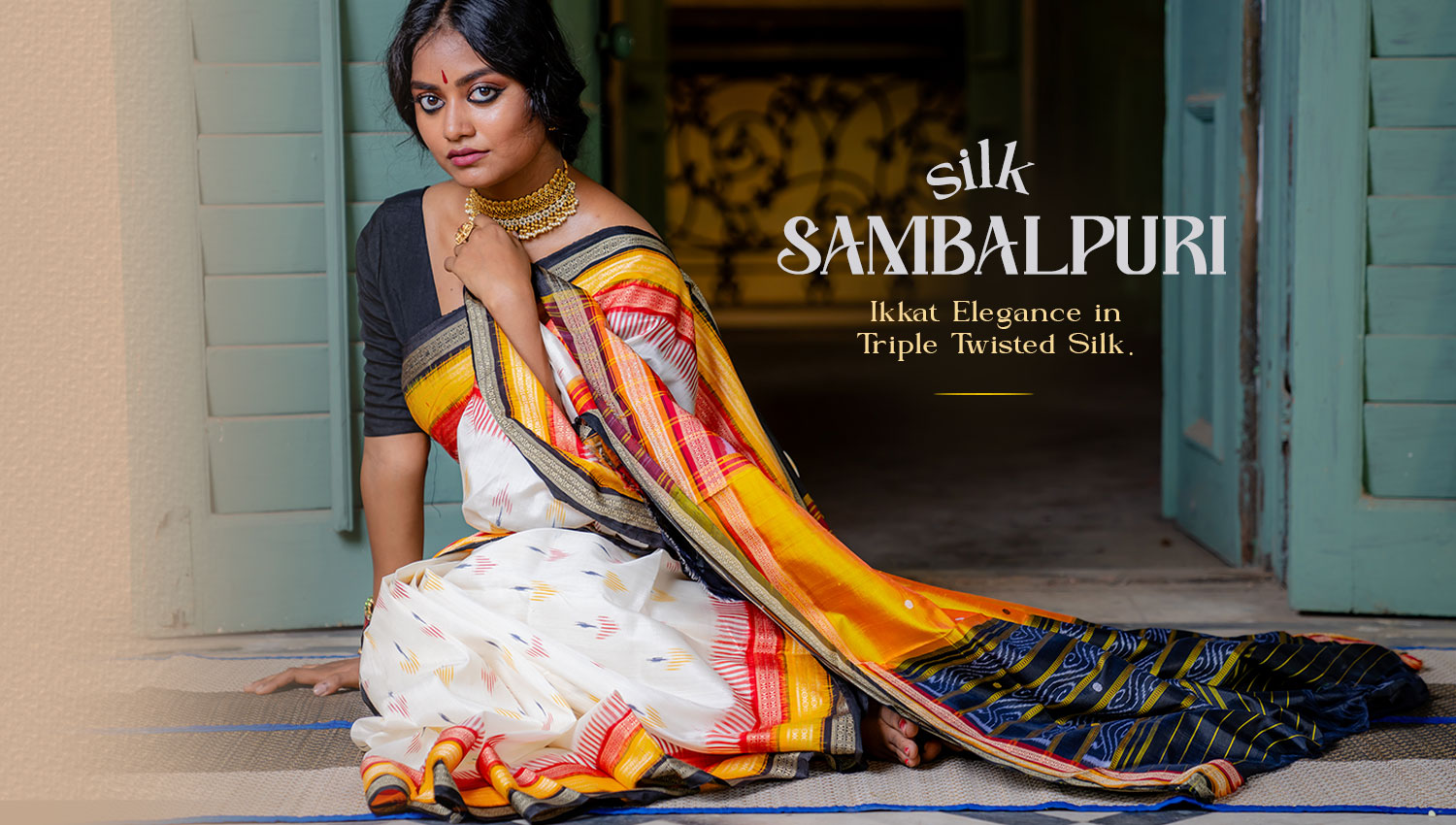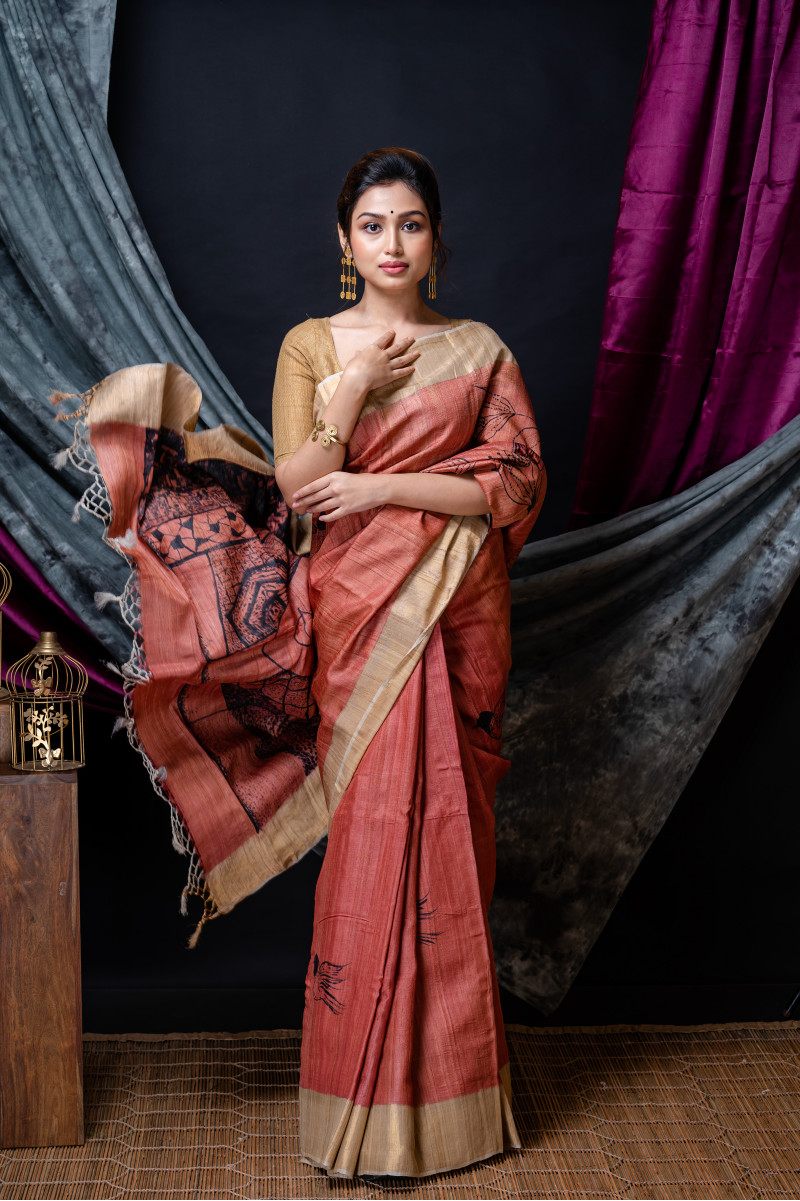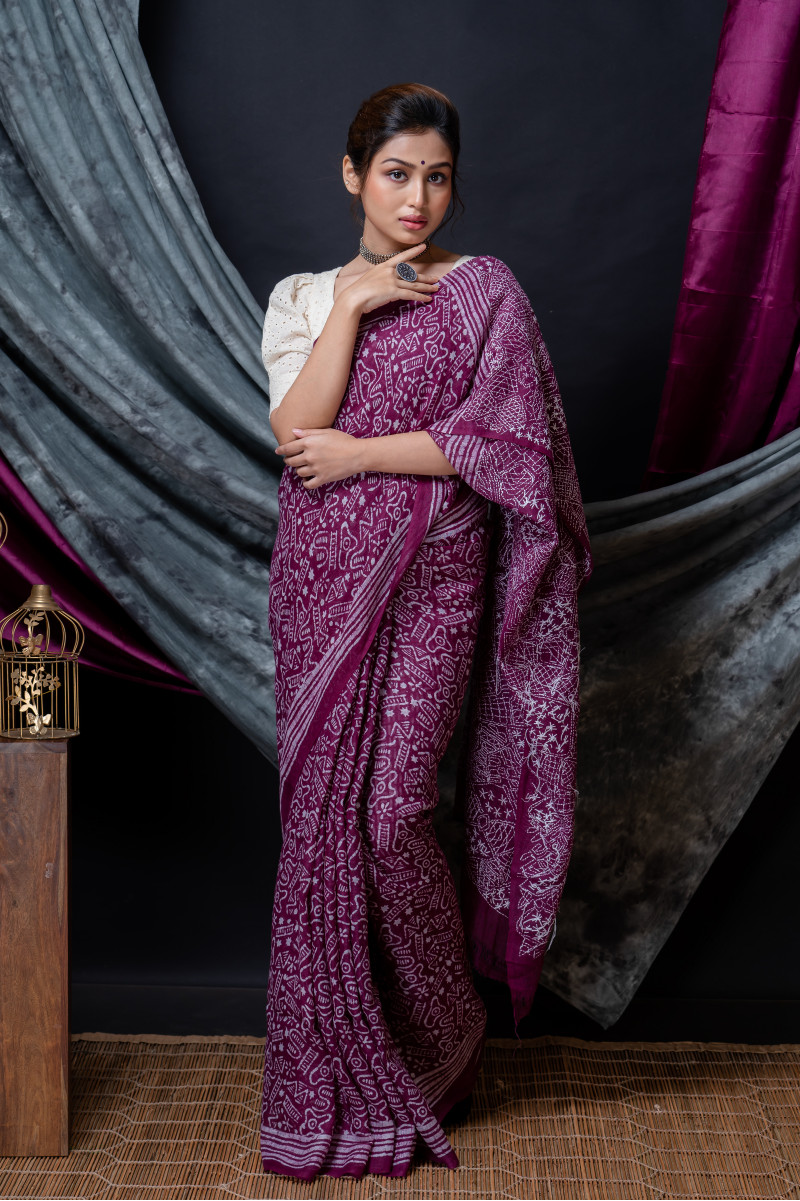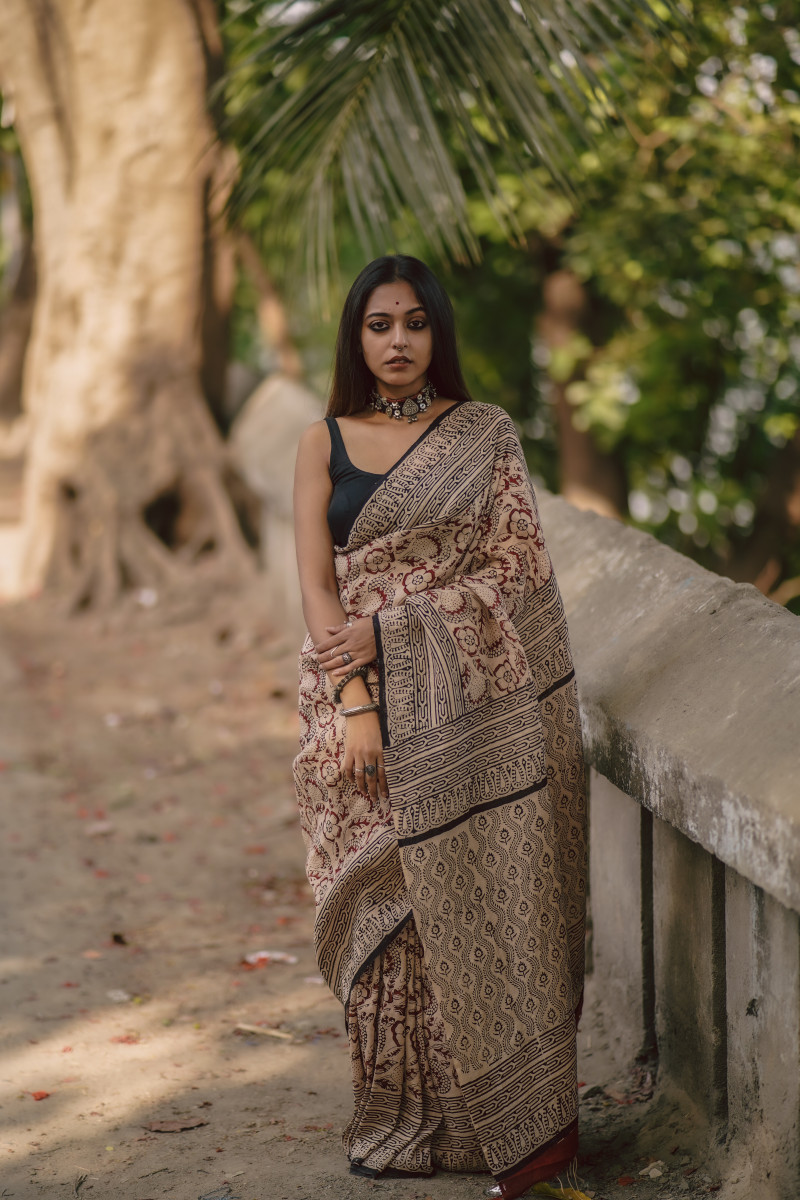At Bandhuli, we procure the raw material for sarees directly from the local weavers in the villages and districts they are produced in. Our authentic Tussar silk comes from Chhattisgarh, while the cotton sarees are obtained from weavers in Bengal.
We offer four main categories of sarees – silk, Tussar, cotton, and linen. Every silk saree available at our shop comes with the original Silk Mark recognised by the Govt. of India – a symbol of authentication for the fabric. Our cotton is of two types – pure cotton and mercerised cotton. The latter is dipped in a special chemical formula to give the fabric a glossy look and also makes the fibres stronger and more durable. Our linen sarees are also of the highest premium quality.
Once we have procured the fabric, Bandhuli has an in-house design team who then decides which handiwork is to be put on which saree. We are associated with craftsmen and printers who can provide us with the following designs:
Madhubani
Madhubani art, also known as Mithila painting, can be traced back to thousands of years and also finds mentions in our mythological epics like Ramayana and Mahabharata. It originated in Mithila, now Bihar, and hence the name. These hand-paintings are always done using natural dyes and pigments. Madhubani paintings typically feature two-dimensional drawings depicting people, nature, religious deities, and so on. A Madhubani saree usually features these designs on the border and pallu portion of the saree.
Kalamkari
Originating from Andhra Pradesh, Kalamkari is a type of hand-painting or block-printing process that uses only natural dyes. It is one of the oldest traditional art forms still in practice today and is hugely popular for its brightly coloured patterns. Kalamkari designs feature a lot of reds, yellows, greens, and blues. They usually depict women, floral motifs, and scenes from mythological stories. Each Kalamkari saree is different and unique, which makes them exclusive pieces.
Ajrakh
Ajrakh is a form of wood printing technique that finds its roots in Sindh, Pakistan, but has now become a hugely popular handicraft in Kutch, Gujarat. Using only natural colours, Ajrakh designs have a prominence of red, indigo, and black. Intricate geometric patterns are hand-carved on wooden blocks, which are then used on the fabric for block printing. Once dried, they are washed in a mixture of water and bleaching powder, which gives the colours a vibrant touch.
Hand Batik
Hand batik is a wax-resist dyeing technique applied to designs that are hand-drawn on the fabric. The patterns are drawn on pencil first and then re-drawn with hot wax using a pen-like tool. The entire process is much time-consuming, which makes the batik sarees a true work of art.
To take a look at our exclusive collections, you can visit our store in Behala, Kolkata, or go through the various categories of sarees shown on our website. Read Less

.png)








-800x1200.jpg)







-800x1200.png)


















